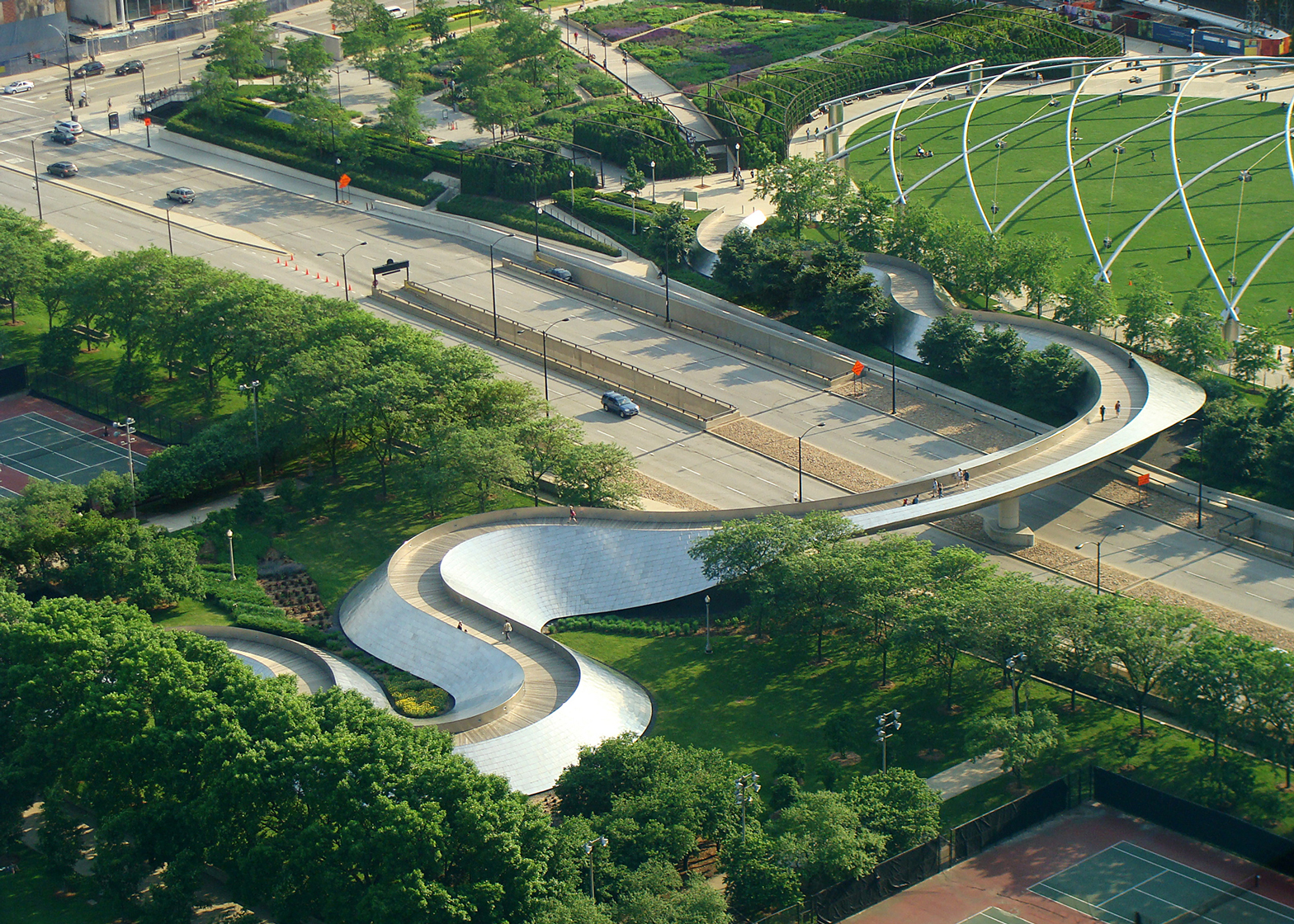It's day two in our Christmas countdown of contemporary bridges, one for every letter of the alphabet. For the letter B, it's Frank Gehry's first bridge – a serpentine structure between two Chicago parks.
With a length of 285 metres, the winding footbridge creates a wheelchair-friendly crossing over Columbus Drive, connecting Millennium Park with the lakefront Maggie Daley Park.
Brushed stainless steel shingles give it a shimmering but scaly exterior, while its bulky form provides an acoustic barrier that protects pedestrians from the noise of the traffic below.
When it opened in 2004, Chicago Tribune critic Blair Kamin described it as "a snaking, somewhat useful, mostly irrational delight, one of Millennium Park's great pleasures".
"In a world that usually favours the straightest route from Point A to Point B, only a superstar such as Gehry could have designed (and gotten away with) a bridge that resembles a giant silver snake, complete with a scaly skin," he said.
Los Angeles-based Gehry is believed to have taken on the project because he saw the initial drawings by SOM – who designed the Millennium Park masterplan in 2002 – and thought he could do a better job.
Designed to complement his Jay Pritzker Pavilion at the northern end of the park, its exterior was created using over 10,000 steel panels in 17 different configurations. There are no handrails, as the steel parapets create a ledge that users can hold on to as they cross.
Hardwood planks provide the bridge's surface. It ramps up by only 5 per cent to ensure it is easily accessible to all, and the sinuous form is the result of this. These curves allow the bridge to offer different views at every turn.
In the spirit of an advent calendar, Dezeen will publish another bridge every day until Christmas. Letter A was Japan's Akashi Kaikyō Bridge, the world's longest suspension bridge.

